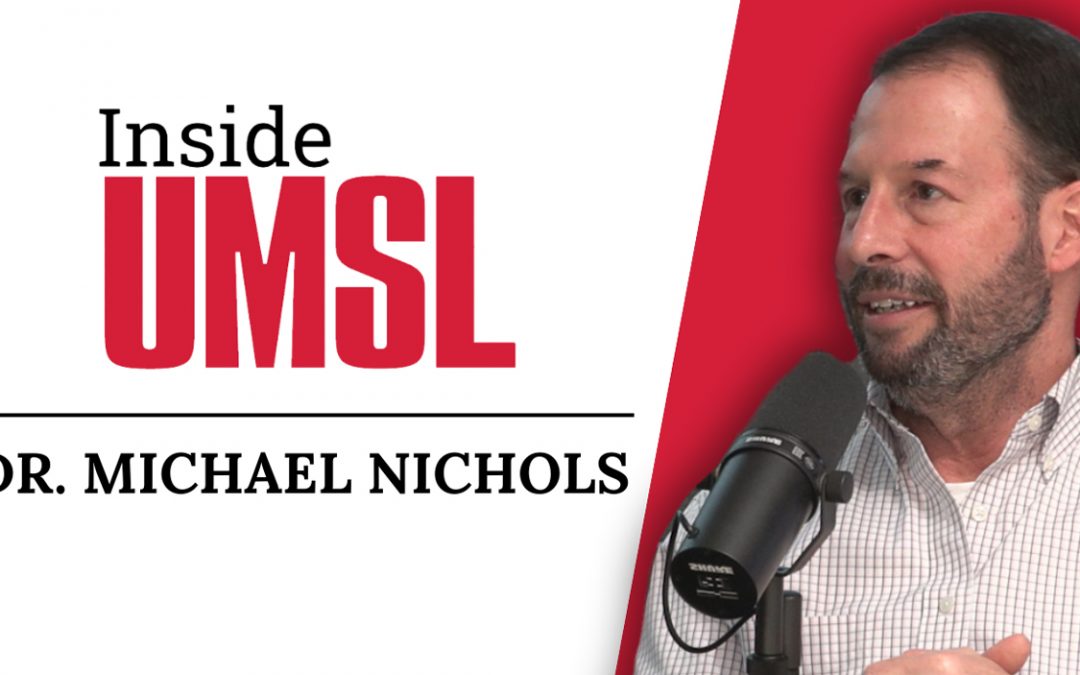
Kevin Fernlund, professor of history and education at UMSL, teaches a course on big history that covers the entire duration of Earth's existence.
History classes often cover a lot of retrospective ground. But not like Kevin Fernlund’s undergraduate course in big history. The professor of history and education at the University of Missouri–St. Louis looks at history from the Big Bang to the BlackBerry.
With renowned paleontologist Donald Johanson set to give the inaugural Big History Lecture, “Lucy’s Legacy: Our African Origins,” at 7:30 p.m. April 25 in the auditorium at the J.C. Penney Conference Center at UMSL, UMSL News caught up with Fernlund to get a better understanding of big history.
In its simplest form, how would you describe the concept of big history?
Big history unites natural history and human history into a single grand narrative, from the Big Bang 13.7 billion years ago to this morning’s breakfast.
Why do you believe it important for a course like this to take a look at the planet’s history in a larger context: from beginning to present?
History courses provide students with perspective. Big history also provides perspective, namely, that we live in a universe that is 13.7 billion years old. And out of that vast time, it has only been in the last 10,000 years, a blink of the eye in cosmic time, that modern humans have been making a significant impact on their environment. I think it’s profoundly important for us to understand time and distance on these scales. To do so helps us answer some pretty big and very old questions: Who are we? Where do we come from? What is our purpose? How should we live? How should we treat each other?
How does your big history course differ from other history courses?
The biggest difference is that big history includes the non-human world. Of course, the Annales School of History in France includes the non-human world and so do environmental history courses in this country. But big history goes beyond Earth and life on Earth to include the solar system, the Milky Way and the cosmos. In this respect, big history stands alone.
How much of the course focuses on a time that predates man?
It depends. But basically it could be broken down as follows: a history of the cosmos, our galaxy, the solar system, the Earth, life on Earth and the history of the human species. The point is to see how each of these parts relates to the others.
How much science is incorporated into the course?
A third of the course is based on science, a third on social science and a third on the humanities. You need all three to teach big history. For example, when we talked about the history of life, UMSL College of Arts and Sciences Dean Ron Yasbin, a geneticist, gave a lecture on DNA. But UMSL historian Carlos Schwantes lectured on the role of transportation in world history. For me, this collaboration is one of the big appeals of the course. It really is interdisciplinary.
It’s my understanding that big history is something that is not commonly taught at universities, particularly in the Midwest.
That is correct. Actually, there are very few big history courses taught anywhere. John Mears taught the first big history course back in the late 1980s at Southern Methodist University in Dallas. Courses on the concept were taught in a handful of universities in the 1990s. In the first decade of this century, several books and articles were published on big history, most notably David Christian’s “The Maps of Time: An Introduction to Big History” (2004). And the International Association of Big History was founded only this past summer by a group of scholars in Europe. But while it is new, it is growing. It’s important to note that big history is as likely to be taught by scientists – geologists and cosmologists – as by historians.
How has the student reception to the class been so far?
Enthusiastic. They especially like the guest lectures. Each week, two or more faculty members from different disciplines visit the class to add their perspective on the story of big history.
Finally, the first Big History Lecture is next week. What are your thoughts – from a big history perspective – on guest speaker Donald Johanson’s famous discovery of Lucy, one of the oldest hominid fossils?
As a big historian, I can’t think of a more appropriate topic. Big historians are interested in the history of the human species. And Johanson’s discovery sheds light on the origins of our species. I once asked him when he thought humans became human. He said the change from animal to human was clear in the Paleolithic art found in the caves in Spain and France. For a scientist to mark the invention of art as the beginning of humanity … well, that is what big history is all about.
Fernlund’s course is Big History: From the Big Bang to the Blackberry.
More information:
umsl.edu/~umslhistory/faculty/fernlund.html
umsl.edu/news/2011/04/12/lucy














